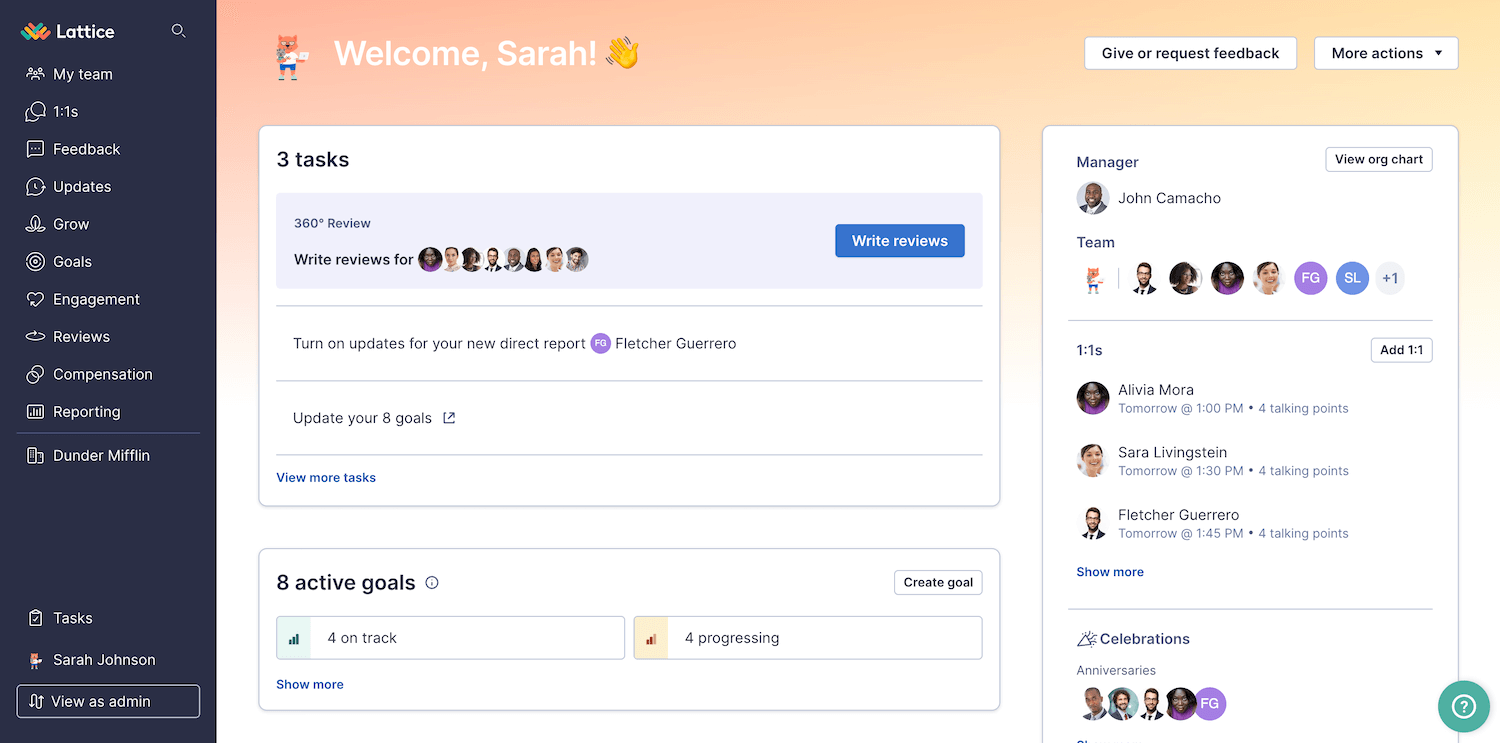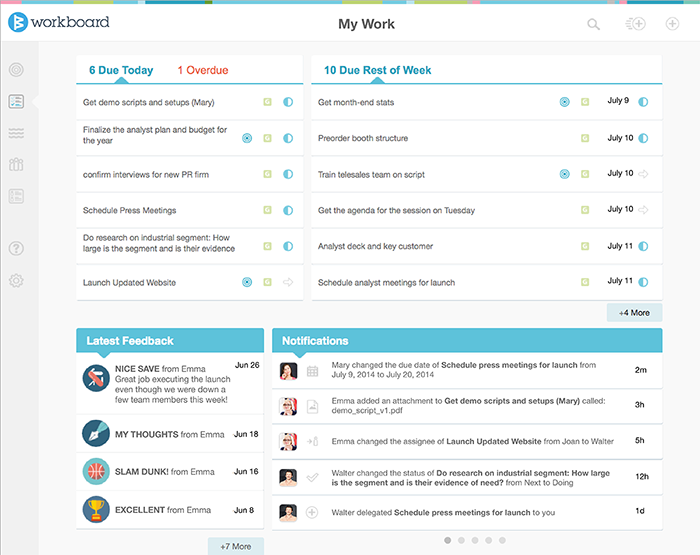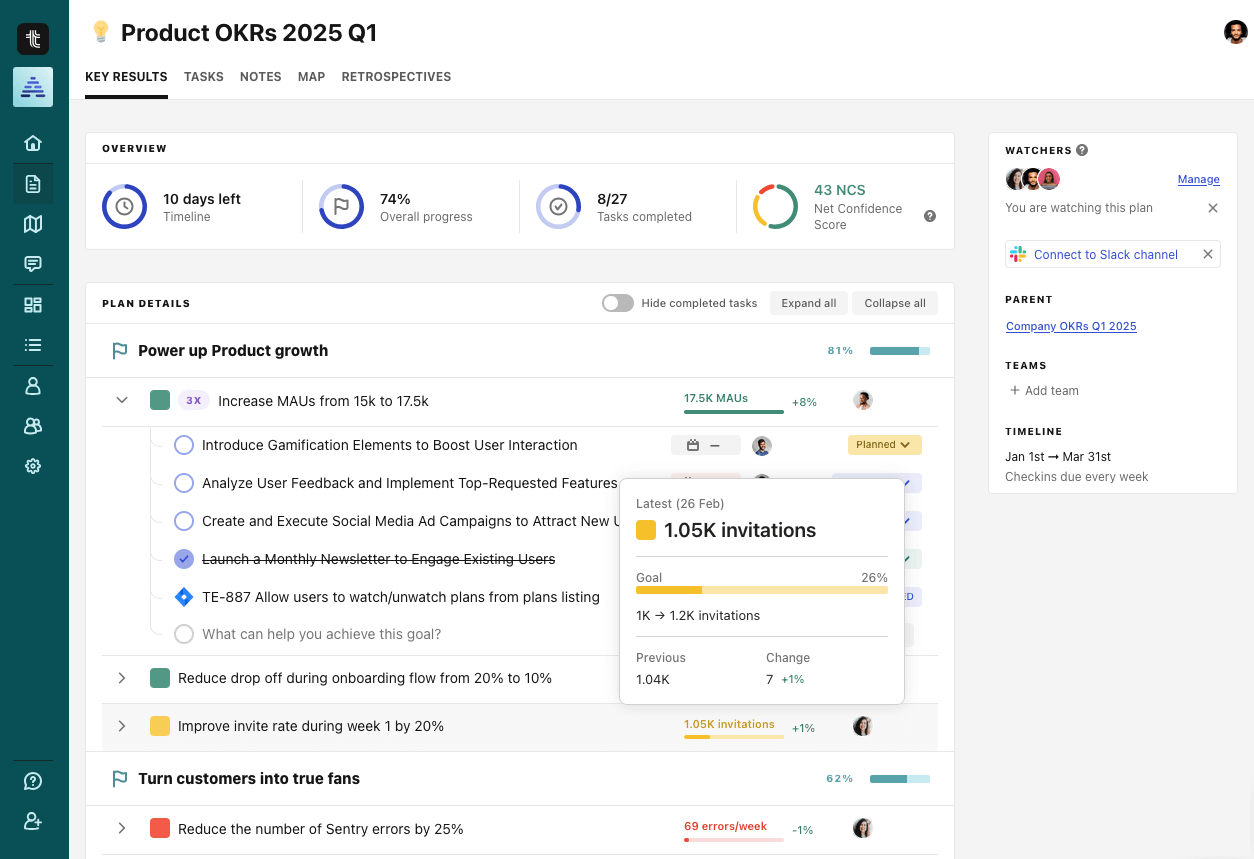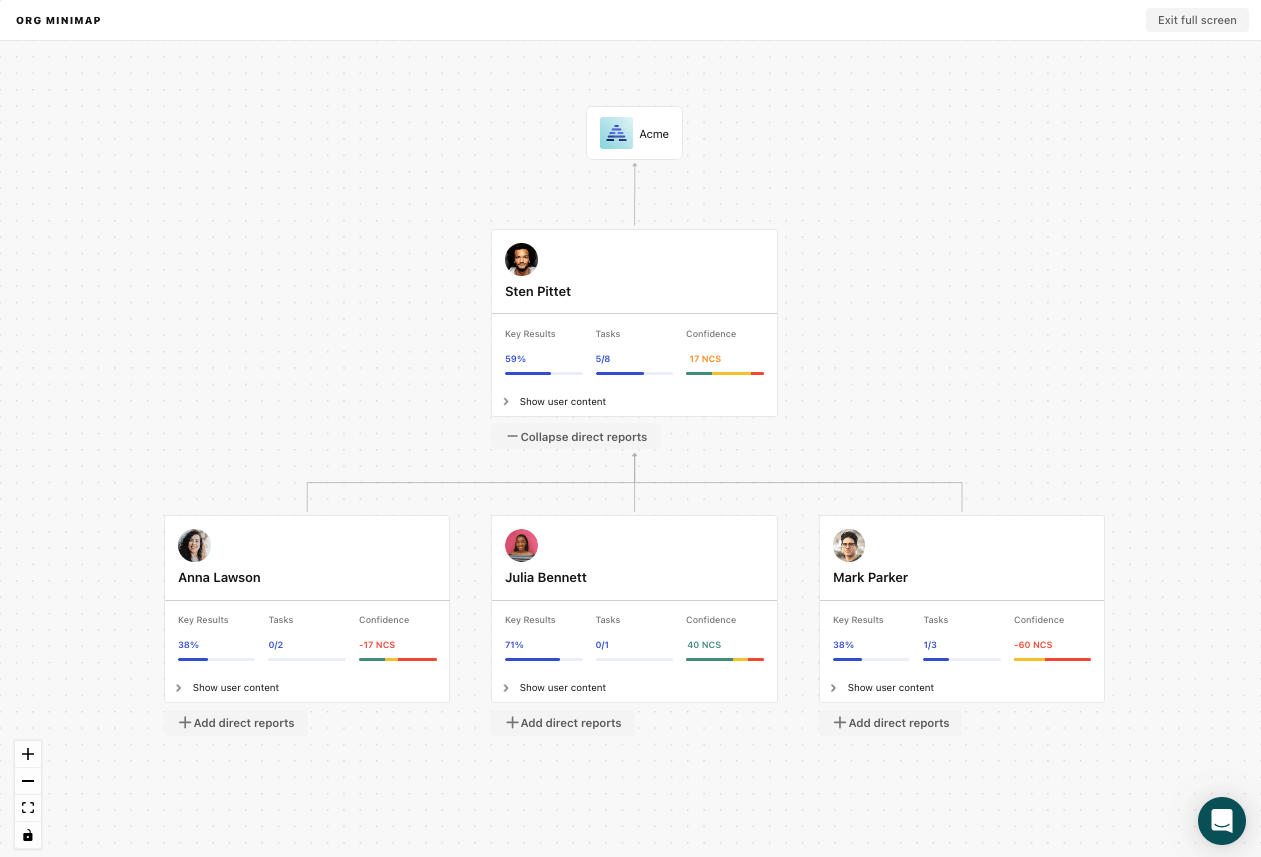The alignment dilemma
Picking the right OKR tool isn't just about ticking boxes — it's about finding a system that actually helps your team align, stay focused, and make progress that matters. With options like Lattice, WorkBoard, and Tability, the decision can feel overwhelming. To make it easier, we're breaking things down by what really counts: ease of use, how well it scales, integration with your current stack, security standards, pricing structure, and the quality of support. If you're trying to drive clarity without adding complexity, this guide will point you in the right direction.
Platform overviews
Lattice

Lattice is an all-in-one people management platform that combines OKRs, performance reviews, employee engagement, and career development in a single solution. While its OKR capabilities are built to support goal alignment, Lattice’s primary focus is on HR and people teams looking to connect performance with organizational outcomes.
It's a great choice for companies that want to tie goals closely to employee performance, but may not be the best fit for teams seeking a fast, lightweight, or execution-first OKR tool.
WorkBoard

WorkBoard is an enterprise OKR platform designed for organizations that require structured goal-setting, performance tracking, and executive-level reporting. It provides a comprehensive suite of tools aimed at aligning strategic objectives across large teams while integrating deeply with business workflows.
With strong analytics and reporting capabilities, WorkBoard is a great fit for businesses that need detailed goal-tracking at scale.
Tability

Tability is an intelligent goal-tracking platform designed to help teams stay focused and aligned with minimal effort. Unlike traditional OKR tools that require frequent manual check-ins, Tability automates progress tracking, provides actionable insights, and makes goal-setting a seamless experience.
With its AI-driven recommendations, intuitive interface, and deep integrations, Tability is the perfect solution for fast-moving teams that want to stay on top of their objectives effortlessly.
At a glance
You will find below a quick overview of the pricing and rating of Lattice, WorkBoard, and Tability. For a more detailed comparison of vendors, you can read our OKR software pricing comparison guide.
| Lattice | WorkBoard | Tability | |
|---|---|---|---|
| Starting cost | $11/user/month | N/A | $6/user/month |
| Min. users commitment | 40 | N/A | 1 |
| Min. months commitment | 12 | N/A | 1 |
| Annual cost for 100 users* | $13,200/year | N/A | $9,600/year |
| G2 score | 4.7/5 | 4.7/5 | 4.7/5 |
*Annual cost for 100 users is based on the highest pricing tier that includes SSO/SCIM and meets the requirements of large teams.
OKR Features comparison
We dug deep into each vendor's website and documentation to get a clear picture of what their OKR tools actually offer. No fluff — just the features that matter. We've grouped them into three practical sections: weekly OKR tracking, goal-setting capabilities, and reporting/reflections. Here's how they compare at a glance.
| Lattice | WorkBoard | Tability | |
|---|---|---|---|
| Weekly OKR tracking | |||
| OKR progress dashboards | ❌ | ✅ | ✅ |
| Visual OKR tree | ❌ | ✅ | ✅ |
| Check-in reminders | ✅ | ✅ | ✅ |
| Initiatives tracking | ❌ | ❌ | ✅ |
| Mobile app | ✅ | ✅ | ✅ |
| Goal setting | |||
| OKR spreadsheet import | ❌ | ❌ | ✅ |
| Goal-setting AI | ❌ | ✅ | ✅ |
| Custom targets | ❌ | ✅ | ✅ |
| Reporting & reflections | |||
| Email reports/notifications | ✅ | ✅ | ✅ |
| OKR retrospectives | ❌ | ❌ | ✅ |
| Custom dashboards | ❌ | ✅ | ✅ |
| Public views | ❌ | ❌ | ✅ |
| AI-driven insights | ❌ | ✅ | ✅ |
Integrations
Weekly check-ins shouldn’t feel like homework. The best OKR tools make it easy to update progress without switching tabs or hunting down numbers. We’ve split the integrations into two groups: data connectors, which sync real progress from tools like Jira or Notion, and communication integrations with Slack or Microsoft Teams. We also checked for a public API in case you want to build your own workflows.
| Lattice | WorkBoard | Tability | |
|---|---|---|---|
| Slack | ✅ | ✅ | ✅ |
| Microsoft Teams | ✅ | ✅ | ✅ |
| Jira | ✅ | ✅ | ✅ |
| ClickUp | ❌ | ❌ | ✅ |
| Linear | ❌ | ❌ | ✅ |
| Asana | ❌ | ✅ | ✅ |
| Notion | ❌ | ❌ | ✅ |
| Confluence | ❌ | ❌ | ✅ |
| Data connectors | None | Google Sheets, Excel, Power BI, HubSpot, Salesforce + 9 more | Google Sheets, Tableau, Big Query, Power BI, HubSpot, Salesforce, SQL + 15 more |
| Zapier | ❌ | ✅ | ✅ |
| Public API | ✅ | ✅ | ✅ |
The winner: Tability

If you want a tool that your team will actually use, Tability checks all the right boxes. It’s easy to roll out, powerful enough to support large deployments, and doesn’t come with the heavy price tag of enterprise-focused platforms. Whether you're just starting out with OKRs or managing them at scale, Tability offers an ideal blend of simplicity and substance.